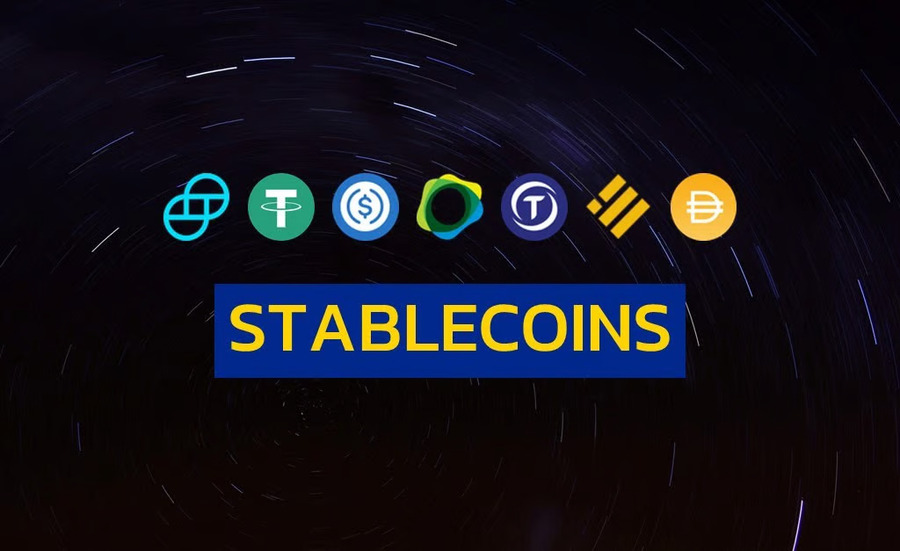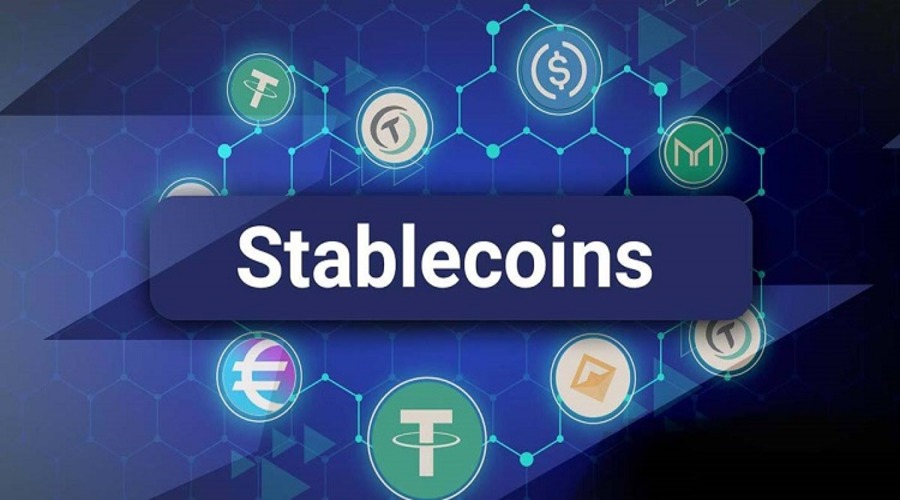Cryptocurrencies have revolutionized the financial landscape, offering decentralized and borderless transactions. However, their volatile nature has hindered their mainstream adoption as a medium of exchange and store of value. To bridge the gap between the stability of traditional fiat currencies and the benefits of cryptocurrencies, stablecoins have emerged as a promising solution. In this article, we will explore the concept of stablecoin, its types, benefits, use cases, challenges, and the future they hold in the evolving financial ecosystem.
Introduction to Stablecoins
Stablecoins are a type of cryptocurrency designed to maintain a stable value by pegging their price to an underlying asset, such as a fiat currency like the US dollar or a commodity like gold. The primary purpose of stablecoin is to provide stability and reduce the price volatility associated with other cryptocurrencies like Bitcoin or Ethereum. By combining the advantages of cryptocurrencies with the stability of traditional fiat currencies, stablecoin offers a middle ground that appeals to a wider range of users.
One of the key reasons stablecoins are gaining traction is their ability to facilitate seamless transactions and act as a bridge between the traditional financial system and the world of cryptocurrencies. Stablecoin enables users to benefit from the efficiency and security of blockchain technology while minimizing the risks typically associated with cryptocurrencies.
Types of Stablecoins
There are several types of stablecoins, each with its own mechanism for maintaining stability:
- Fiat-collateralized stablecoin: These stablecoins are backed by reserves of traditional fiat currencies, typically held in banks. For every unit of stablecoin issued, an equivalent amount of fiat currency is held in reserve. Examples of fiat-collateralized stablecoins include Tether (USDT), USD Coin (USDC), and TrueUSD (TUSD).
- Crypto-collateralized stablecoin: These stablecoins are collateralized by other cryptocurrencies, such as Ethereum or Bitcoin, which are held in smart contracts. The value of the collateral ensures stability. Dai (DAI), created on the Ethereum blockchain, is a well-known crypto-collateralized stablecoin.
- Algorithmic stablecoin: These stablecoins use smart contracts and algorithms to maintain stability without direct collateralization. The supply of algorithmic stablecoin expands or contracts based on predefined rules and market conditions. Basis Cash and Frax are examples of the algorithmic stablecoin.
Benefits of Stablecoin
Stablecoins offer several benefits that make them appealing to individuals and businesses:
1. Stability and reduced volatility: Unlike most cryptocurrencies, stablecoin aims to maintain a stable value, minimizing the price volatility associated with other digital assets. This stability makes stablecoin more suitable for everyday transactions and a reliable store of value.
2. Easy transferability and global accessibility: Stablecoin can be transferred quickly and easily across borders, enabling efficient cross-border payments and remittances. With stablecoin, users can bypass the traditional banking system, which can be slow and costly, particularly for international transactions.
3. Increased security and transparency: Stablecoin leverage blockchain technology, which provides a high level of security and transparency. Transactions conducted using stablecoins are recorded on a decentralized ledger, reducing the risk of fraud or manipulation.
4. Privacy and control: Stablecoin offers varying degrees of privacy. Some stablecoins, like Tether, provide a level of anonymity, while others, like USDC, prioritize compliance with regulatory requirements. Users have more control over their funds and can choose stablecoin that align with their privacy preferences.
Popular Stablecoins in the Market

Several stablecoins have gained significant traction in the market, each with its own unique features and use cases. Some of the most popular stablecoins include:
1. Tether (USDT): Tether is the most widely used stablecoin, pegged to the US dollar. It operates on multiple blockchains, including Ethereum and Tron, and has faced scrutiny regarding its reserves and transparency.
2. USD Coin (USDC): USD Coin is an ERC-20 stablecoin pegged to the US dollar. It is backed by a consortium of companies known as the Centre, including Coinbase and Circle, and is known for its regulatory compliance and transparency.
3. Dai (DAI): Dai is a decentralized stablecoin built on the Ethereum blockchain and maintained by the MakerDAO protocol. It achieves stability through over-collateralization and autonomous feedback mechanisms.
4. Binance USD (BUSD): Binance USD is a stablecoin launched by Binance, one of the world’s largest cryptocurrency exchanges. It is backed 1:1 by the US dollar and operates on the Binance Chain.
5. TrueUSD (TUSD): TrueUSD is an ERC-20 stablecoin backed by US dollars held in escrow accounts. It offers transparency through regular audits and real-time account balance verification.
These stablecoins have gained popularity due to their reliability, liquidity, and wide acceptance across various cryptocurrency exchanges and platforms.
Use Cases of Stablecoins
Stablecoins have a wide range of use cases that showcase their versatility and potential impact on various industries:
1. Remittances and cross-border payments: Stablecoin provides a fast and cost-effective way to send money across borders. Workers can send remittances to their families in other countries without relying on traditional money transfer services, reducing fees and transaction times.
2. Decentralized finance (DeFi) applications: Stablecoin serves as a foundation for various decentralized finance applications. They provide liquidity and stability within DeFi protocols, enabling users to lend, borrow, trade, and earn interest on their digital assets.
3. Trading and hedging: Stablecoin offers a convenient medium for traders to move funds between exchanges quickly. Traders can convert their volatile cryptocurrencies into stablecoin during market downturns to mitigate losses and preserve their capital.
4. Stablecoin lending and borrowing: With stablecoin, users can lend their funds and earn interest or borrow funds by collateralizing their cryptocurrencies. Stablecoin lending platforms provide an alternative to traditional banking, offering higher interest rates and fewer bureaucratic hurdles.
Challenges and Risks of Stablecoins
While stablecoin offers numerous benefits, they also face challenges and risks that must be addressed for their continued growth:
1. Centralization concerns: Some stablecoins have faced criticism for their lack of decentralization and centralization of power. The centralized control of reserves raises concerns about censorship, counterparty risk, and potential manipulation.
2. Regulatory uncertainty: Stablecoin operates in a regulatory gray area, and its classification and treatment by different jurisdictions are still evolving. Regulatory changes or crackdowns can have significant implications for stablecoin issuers and users.
3. Counterparty risk: Fiat-collateralized stablecoin depends on the trustworthiness and solvency of the entities holding the reserves. Users must trust that the reserves are adequately maintained and audited to avoid potential risks.
4. Maintaining stability in extreme market conditions: Stablecoin face challenges during periods of extreme market volatility. Sudden price fluctuations in the underlying collateral or network congestion can impact the stability of stablecoin.
The Future of Stablecoins
The future of stablecoin looks promising, with the potential for further integration into the traditional financial system and advancements in their underlying technology. Here are some potential developments:
1. Integration with traditional financial systems: Stablecoins are likely to see increased integration with traditional financial systems, allowing users to seamlessly transition between digital and fiat currencies. This integration can facilitate wider acceptance and usage of stablecoin in everyday transactions.
2. Enhanced interoperability and cross-chain compatibility: Efforts are underway to enhance interoperability between different stablecoin networks and blockchain platforms. This would allow stablecoins to be easily exchanged and utilized across multiple ecosystems, increasing their utility and convenience.
3. Potential for central bank digital currencies (CBDCs): Central banks worldwide are exploring the concept of central bank digital currencies. Stablecoins, with their stability and efficiency, serve as a precursor to CBDCs and may influence the development and adoption of government-backed digital currencies.
Conclusion
Stablecoins have emerged as a crucial link between fiat currencies and cryptocurrencies, offering stability, transferability, and transparency. Their ability to bridge the gap between these two financial worlds opens up numerous possibilities for individuals and businesses. While challenges and risks exist, ongoing innovations and regulatory developments are shaping a promising future for stablecoins. As the financial landscape continues to evolve, stablecoins are likely to play a significant role in facilitating efficient and accessible global transactions.
FAQs
Q1: Are stablecoins only pegged to fiat currencies like the US dollar?
A1: No, while many stablecoins are pegged to fiat currencies, some are also pegged to other assets like commodities or other cryptocurrencies.
Q2: How do algorithmic stablecoins maintain stability without direct collateralization?
A2: Algorithmic stablecoins adjust their supply based on predefined rules and market conditions. If the price is above the peg, the supply expands, and if the price is below the peg, the supply contracts, maintaining stability.
Q3: Can stablecoins be used for long-term investments?
A3: Stablecoins are primarily designed for stability and short-term use. However, they can be used as a temporary store of value during market volatility or as a means to park funds before making other investments.
Q4: Do stablecoins require a bank account for transactions?
A4: No, stablecoins are digital assets that can be stored and transacted without the need for a traditional bank account. They operate on blockchain technology and can be stored in compatible wallets.
Q5: How can stablecoins benefit the unbanked population?
A5: Stablecoins can provide financial inclusion for the unbanked population by enabling them to access digital transactions and cross-border payments without relying on traditional banking infrastructure.
I’m a Crypto author and I have written for some of the most popular Crypto publications. I have also been interviewed by leading Crypto media outlets. My work focuses on providing accurate and actionable information to help people invest in Bitcoin and other digital currencies.
I have over 10 years of experience in the financial sector, and hold a degree in Economics from the University of London.
